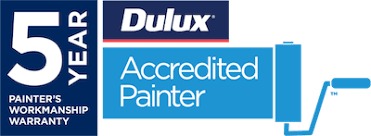What is re-pointing Roofing Services, and do you need it on your roof?
In this blog post, Duravex Roofing Group explains everything about ridges and re-pointing.
Re-bedding & Repointing of Ridge Caps
Repairing and maintaining your roof can be difficult enough without the additional confusion that comes with the various roofing terms and what they mean for your roof! With storm season quickly approaching, many homeowners are starting to perform their annual maintenance checks. Re-pointing is one of the most common points of maintenance on tiled roofs!
Ridge capping is an important aspect of a well-sealed roof. We ensure the correct joining of loose ridge capping in a full rebed and repoint to prevent leaking and dislodgement. Ridge caps are an important part of your roof’s drainage system and come in a variety of materials and colours to match your existing roofing. Duravex Roofing Group Services will provide you with an outstanding and aesthetically pleasing result based on our years of experience and training in ridge capping.
REBED AND POINT
When the ridge cap mortar has deteriorated beyond the point of resealing, the term “rebed and point” is used. When this happens, the mortar must be removed, and the tiles and caps must be cleaned to remove the old mortar. The caps are then re-bedded into place with a sand and cement mix in a 4 to 1 ratio. When the caps edges are dry, they are wire-brushed to remove ant bedding from the caps edges and tiles, resulting in a clean surface for the flexible pointing to adhere to. After that, the caps are pointed (sealed) with new tinted flexible pointing.
What exactly is ridge capping?
Ridge capping refers to the triangular-shaped tiles that are installed at the highest point of the roof where two roof areas intersect. These are attached to the roof using bedding and pointing.
What is the difference between pointing and bedding?
Bedding is a mixture of sand and cement/mortar that holds the ridge capping in place on the ridges. Pointing is a flexible material that is used to finish the joints between the ridges and the roof tiles. Duravex Roofing Group Services uses Selleys point works when re-pointing.
How do I know if my roof needs to be re-bedded or re-pointed?
Cracks or gaps in the pointing along your ridge capping indicate that your roof needs to be re-pointed. A visual inspection of your ridge capping from the ground should be sufficient to determine the condition of your pointing. It’s a little more difficult to identify yourself when you’re re-bedding. If you suspect that your bedding needs repair, it is best to have a qualified roofer inspect the ridge capping.
What is the procedure for re-bedding or re-pointing?
Re-bedding necessitates the removal of the old bedding and pointing material. Following that, bedding mortar is mixed, which is composed of three parts roofers’ loam and one part cement. This bedding mix is then trowelled onto the roof tiles that will be covered by the ridge capping. A ridge rack is used to keep the ridges straight and the bedding in place for the ridge caps to sit on. The bedding is then trowelled up to a clean up-and-down finish that is slightly inwards from the ridge. This creates a solid foundation for the flexible pointing to adhere to.
After the bedding has dried, flexible pointing is applied to the sides of the ridge at a thickness of 3 – 5mm, as well as the collars where the ridges overlap. The ridges are now completely windproof and waterproof. The flexipoint or Selleys point works also flexes in sync with normal roof movement, preventing future ridge capping cracking.
This list should have helped you understand the ins and outs of your ridge capping! If you believe it is time to schedule a roof quote, contact Duravex Roofing Group today to receive a full roof report from a qualified roofer.










